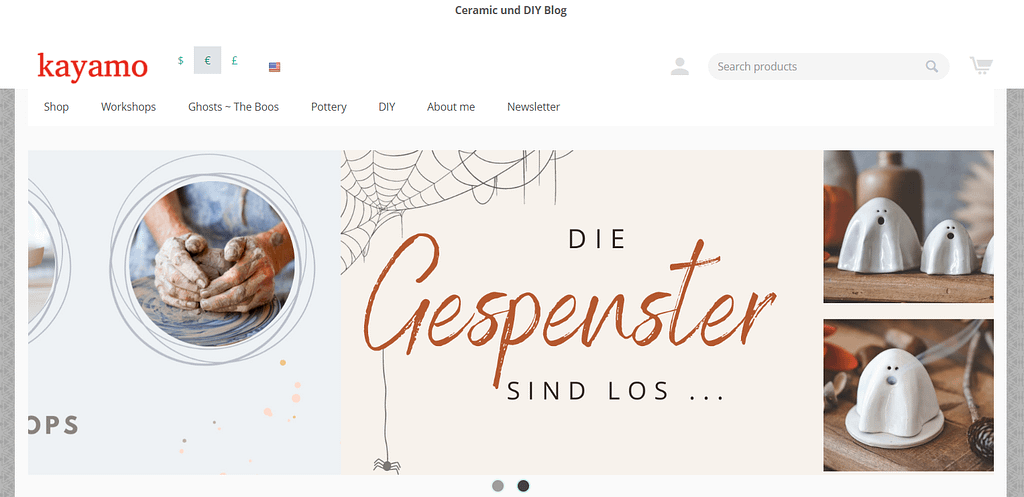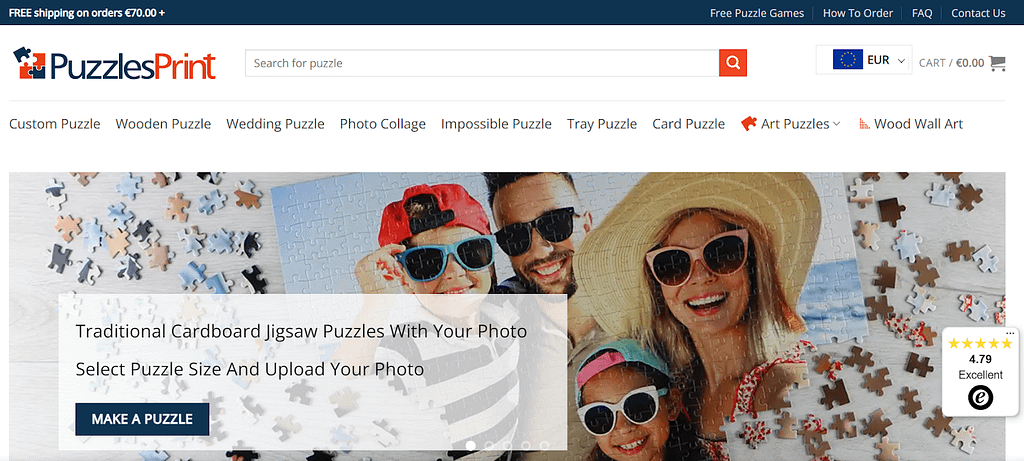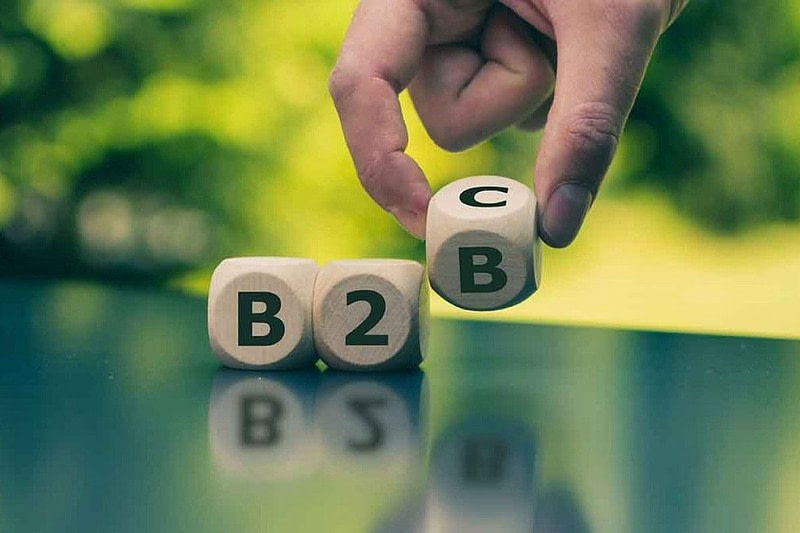B2B (Business-to-Business) and B2C (Business-to-Consumer) represent the two primary market segments in eCommerce, each with distinct sales approaches. While B2B focuses on transactions between companies, B2C is centered around sales from a business to individual consumers.
In the realm of eCommerce, the integration of B2B and B2C approaches occurs through platforms that cater to both segments. For instance, many eCommerce platforms offer features that enable companies to sell to other businesses (B2B) and directly to end consumers (B2C) within the same platform.
This article delves into the unique characteristics of the B2B and B2C segments in eCommerce and explores how fusing these segments on a single platform can be beneficial for online business owners.
Let’s examine each approach in more detail, beginning with B2C as it appeared first.
What is B2C?
B2C, or “business-to-consumer,” is a straightforward model where the company profits from selling goods to end consumers, in other words, regular people. Every time a user buys products, orders sushi, or subscribes to yoga classes, they are engaging in a B2C transaction. Sellers in this segment have a large customer base but typically smaller order values.
Read more: B2C Marketplaces: Exploring Launch Stages And Business Prospects
What is B2B?
B2B, or “business-to-business,” is a commercial activity where buyers and sellers are legal entities (corporations, companies, firms, or individual entrepreneurs). It involves complex interactions between manufacturers, importers, distributors, dealers, retailers, and stores, all aiming to profit by reselling acquired products or offering services (such as installation, delivery, setup, and maintenance).
For example, a furniture factory purchases materials to make tables and cabinets from other companies. The waste generated during production is sold to a wood processing plant. The participants in these transactions are B2B sellers who collaborate to profit from their interactions.
Now, let’s talk about sales: the furniture factory sells its products at wholesale prices to stores – this is also B2B. If they sell directly to end consumers, it becomes B2C because the sale shifts to a regular consumer.
In B2B transactions, prices are often determined upon request or through negotiations between participants. Unlike in B2C where a customer sees a product and places an order, pricing, discounts, payment terms, shipping, and document processing are individually negotiated and agreed upon in advance in B2B.
Read more: B2B ECommerce Development: A Complete Guide
Examples of B2B and B2C
To better understand what is the difference between B2B and B2C marketplaces, let’s look at some real-world examples developed by Simtech Development. A significant part of the B2C segment comprises online stores focusing on individual customer orders. For instance, we created a virtual try-on for eyewear for the online optics store SeeWhatHappens (Belgium).


Another B2C example – a marketplace for handmade ceramics jewelry, Kayamo (Germany).
The Simtech Development team also participated in the development of the online store PuzzlesPrint (Hungary). Its founder, Aivars, had the idea of selling custom photo puzzles, and our company successfully implemented it. We integrated an online photo editor on the site to help adjust images and a “Puzzle Game” to engage users. Puzzlesprint.com has been successfully operating in B2C for 13 years. That’s how long our companies have been collaborating.

For the B2B sector, Simtech Development has developed online stores selling solar panels, food for restaurants, pumping equipment, hobby and craft supplies, and lubricants. In February 2023, we completed the “turnkey” development of an online store, which sells packages made of composite materials and flexible packaging. Its clients are enterprises selling seeds, feed, fertilizers, and bulk food products.

Nova Group, a marketplace from Poland, connects stationery stores and wholesalers to offer the best commercial deals for customers. We customized their B2B project to include features like quick order, minimum order value, and best commercial offer functionalities. These enhancements have improved efficiency and user experience, ensuring fair competition among vendors while providing customers with the best deals.
B2B vs B2C: What products and services offer companies?
In 2022, global online sales of fast-moving consumer goods (FMCG) increased by 6.3% (with Pet Care and Snacking products as the leading category). This data comes from a report by NielsenIQ, an analytical agency specializing in global consumer demand research. The report indicates a growing trend among consumers to seek more economical and advantageous offers. Online retail is replacing offline retail. It’s no surprise that the most massive category in the B2C market consists of consumer goods: food, clothing, shoes, and electrical appliances.
B2B thrives on manufacturers and large volumes of supplies. This includes woodworking plants, machine shops, automobile manufacturers, and metallurgical factories. The spectrum of industries for “corporate business” (as B2B is often referred to) is not limited.
Read more: TOP 10 Marketplace Ideas: How To Find A Great Idea In 2024
What is a difference between B2B and B2C in eCommerce Websites
Let’s first see the key differences between B2B and B2C businesses, and then pass to websites themselves.
Difference between B2B vs B2C businesses
| Feature | B2B | B2C |
| Target audience | Legal entities | Individuals |
| Number of Consumers | Limited, each client is prioritized | Hundreds, sometimes billions of consumers (as in global marketplaces). Lower importance of an individual consumer. |
| Customer Expertise | High: entrepreneurs won’t invest in a low-quality product or service | Low: most purchases are made based on recommendations, reviews, influencers’ pieces of advice or word of mouth |
| Product Complexity | Often technically complex products (such as equipment) | Easy to use: essentials, household appliances, customized items. |
| Average cost of a one-time purchase | High | Low |
| Change in demand over time | Dynamic, responsive to economic trends. | Relatively stable. |
| Purchase motivation | Price-quality ratio that allows achieving maximum profit. | Customer’s personal preferences, their likes, preferences, and habits. |
| Purchase decision-making | In group (including CMO, accountants, procurement officers, or consultants). Requires expertise and coordination among stakeholders. | Sole decision-making. Based on emotional attachment, often spontaneous. |
| Communication | Individualized: it is necessary to establish contact with each client, regularly gather feedback to improve the product and offer new solutions. | Mass: because every client is a potential buyer. |
| Sales Cycle | Lengthy and complex, requiring agreement on deal terms and responsibilities of the parties. | Short: purchases happen “here and now”. |
| Sales Channels | Online stores, business events, personal meetings. | Online stores, social media, online advertising, and mass media advertising. |
| Brand | Corporate brand is important. | Product brands are important. |
| Marketing Strategy | Focus on increasing order volume over a specific period. | Focus on increasing sales volume and average order value. |
Difference between B2B vs B2C online stores
| Feature | B2B | B2C |
| User Registration | Multistep: involves filling in fields with company information. | One-click process with linking to social networks/Google services or not needed at all. |
Verification (confirmation of registration) | It is mandatory and involves various scenarios for:Customer registration (often requiring document uploads)Adding an existing customer to the databaseAdding multiple accounts to be managed under one account. Many store options, including product prices, become available only after verification, when business owners ensure they are dealing with a reliable company. | Not required or done in a simplified form through user email confirmation. |
| Administration | Carried out by a group of people (both from the supplier and the buyer side). | Carried out only on the seller’s side. |
| Personal Account (Profile) | Complex, involves provision of bank details.Access restrictions to different information are present (for example, they may differ for the accountant and the director).Detailed analytics allow viewing not only specific deliveries but also many orders over a selected period. | Simple, customer data is limited to full name, phone number, and delivery address.The personal account stores the customer’s order history, wishlist, and recently viewed items. |
| Personalization of settings for order placement | Mandatory information includes prices, discounts, product range, minimum order quantity, and currency for payments, which are agreed upon individually by the seller and buyer. | Not included: products, prices, and purchase conditions are the same for all customers or customer categories based on a loyalty system. |
| Minimum Order Value | It can be unit-based for technically complex products (e.g., equipment).Wholesale sales are measured in tens and hundreds of units and can be specified in packs or boxes. Wholesale online stores often use a multiple function where the system rounds the order quantity to a multiple number (5, 10, 20, … 100) or cancels it if the batch is less than the first multiple number. | Small quantities, often purchases are made individually. |
| Product Detail Pages | Diagrams, lists of characteristics, and links to extended product information are welcomed to help procurement managers obtain maximum details without spending time clarifying details. | High-quality images and concise descriptions are of paramount importance. |
| Product Search and Filtering | A “smart” search is required (corrects errors and typos, provides suggestions, converts the query text to the required language). Advanced sorting not only by popularity or colors but also by specific characteristics and, importantly, by SKU. Exporting results should be possible in various formats: tables or lists in an Excel file. Adding products to the cart is done from a list/table (selecting the required items and specifying the required quantities). | Product searches have fewer filters compared to B2B. Viewing results and adding to the cart are done manually. |
| Order Payment | Postponed payments, installment payments, or payment schedules are often used. | Prepayment, post-payment, installment payments. |
| Order Processing | Deals can be postponed, orders can be split into several parts and shipped in batches. Order status progression includes processing, assembly, shipping, warehouse-to-warehouse transfer, receiving goods/services. | Orders are processed as they come in.Order status progression includes processing, shipping, receiving goods/services. |
| Document Handling | Contracts, reconciliation statements, invoices, and shipping documents are involved. Documents can be generated within the B2B platform system or integrated with third-party accounting systems. | Fiscal receipt and user manual for the product. |
| Ordering out-of-stock items | B2B eCommerce platforms have functionality that allows customers to place orders for out-of-stock items. The online store should provide estimated delivery dates and notify customers when goods arrive in stock. | In a B2C online store, if a product is unavailable, the product card remains active with a notification that this model is not available.The interface often includes a “Notify Me” button, where users can enter their contact information to receive a notification when the product is back in stock. |
B2B vs B2C: Market size
B2B in eCommerce is considered one of the most promising directions today. To provide solid evidence, let’s look at some analytics: in 2019, the revenue from selling goods from one business to another online reached $26.1 billion. By 2024, according to Statista forecasts, companies in marketing research and analytical services are expected to generate nearly $50 billion in revenue – more than doubling in 5 years! It’s no wonder that such prospects prompt online store and marketplace owners to seriously consider venturing into or expanding their B2B operations.
B2B + B2C: is it possible?
Among the advantages of merging B2B and B2C markets, we can highlight the following:
- Expansion of the customer base
- Increase in sales volume
- Enhancement of marketing campaign effectiveness
- Growth in brand loyalty
“Entrepreneurs often start with ‘business to consumer’ activities online, and after gaining knowledge and experience in digital commerce, they decide to introduce wholesale sales functionality onto their platform. At first glance, this may seem feasible, requiring enormous effort and significant marketing investments. However, business owners who have successfully tackled this challenge affirm that the coexistence of B2B and B2C is a natural occurrence. Think about our example of the furniture factory simultaneously selling products to organizations and end consumers. In our practice, we have a case where the manager of an online marketplace for health and leisure goods approached Simtech Development to add wholesale sales features to the site. Our developers automated the uploading of large product catalogs, created tools for inventory management and synchronization, and optimized search to attract customer traffic. Now, the G-Shopping project operates successfully as a store for both wholesale and retail trade simultaneously”.
Olga, Head of Sales Department at Simtech Development
The changes that need to be implemented for a B2C online store to become B2B
To successfully transit a B2C online store into a B2B model, entrepreneurs planning to integrate B2B sales into their online store for end consumers should consider the following changes:
- Separate employee responsibilities for B2C and B2B sectors. Their functions should not overlap because the goals, audience, and marketing tools for each segment are significantly different.
- Develop two growth strategies: one for retail sales and one for wholesale sales. Define key performance indicators.
- Implement the necessary functionality for B2B transactions.
Key functionalities include:
- Development of a separate registration form for B2B leads
- Group account administration capabilities
- Verification process for B2B registrations
- Creation of distinct product showcases for B2B and B2C customers
- Streamlined catalog and cart management for B2B customers
For modifications and enhancements, entrepreneurs can turn to Simtech Development, an experienced IT company specializing in end-to-end online store development and complex eCommerce solutions.
In the business world, B2B (business-to-business) and B2C (business-to-consumer) are somewhat opposites. However, in eCommerce, they seamlessly merge, enabling online stores to cater to both wholesale and retail sales simultaneously. Simtech Development can integrate the necessary functionality and make the required adjustments to help you tap into this new market.
If you have any questions or need further assistance, feel free to reach us.
FAQ
How is a purchase decision made in B2B vs B2C?
The purchase decision process in B2B marketing involves a group of stakeholders evaluating products based on cost, functionality, and long-term benefits, while B2C purchase decisions are often made by individual consumers based on personal preferences, emotions, and immediate needs. B2B marketing focuses on building long-term relationships, trust, and credibility with clients, while B2C marketing is more transactional and influenced by factors like brand image, advertising, and promotions.
What is the difference between B2B and B2C marketing?
In B2B marketing, the target audience is other businesses or organizations, while in B2C (business-to-consumer) marketing, the target audience is individual consumers. B2B marketing typically involves longer sales cycles, multiple decision-makers, and a focus on building relationships and providing value to other businesses. B2C marketing, on the other hand, often focuses on appealing to emotions, creating brand loyalty, and making quick, impulse purchases.
What is the difference between B2B vs B2C advertising?
B2B marketing often involves more targeted and specialized advertising strategies, such as trade shows, industry publications, and targeted online advertising. B2C marketing, on the other hand, may focus more on mass media advertising, social media marketing, and influencer partnerships to reach a wider consumer audience.

